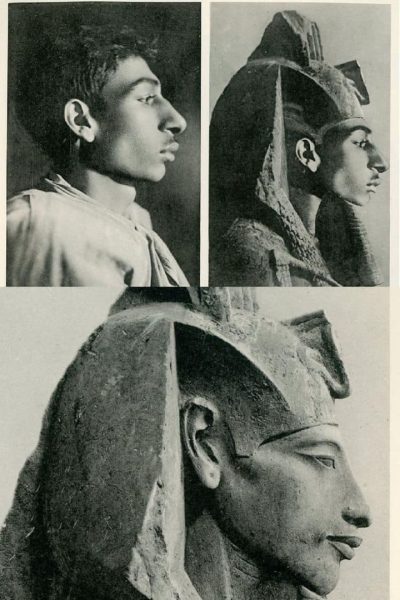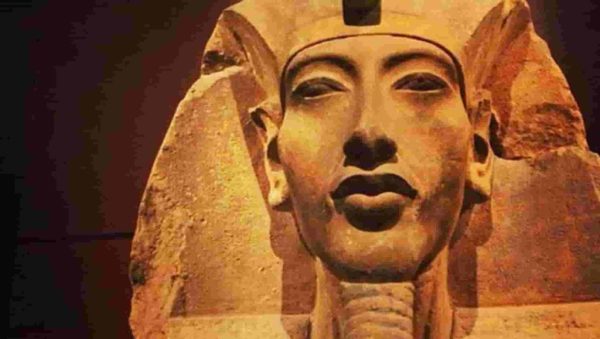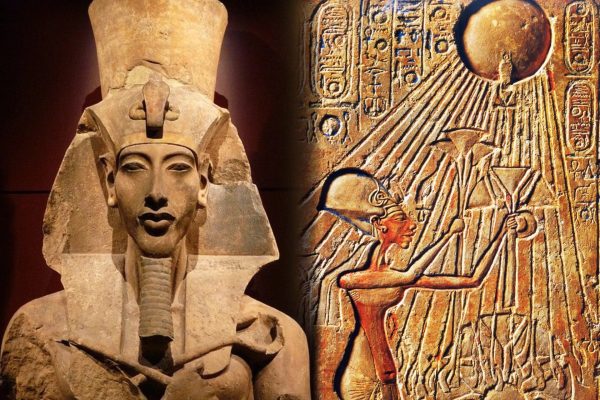
Pharaoh Akhenaten, also known as Amenhotep IV, emerges from the annals of ancient Egyptian history as a figure shrouded in mystery and controversy. His reign, which spanned from 1353 to 1334 BC, marked a tumultuous period of cultural upheaval and religious transformation in Egypt. But was Akhenaten truly a visionary monotheist, a despotic tyrant, or simply a brilliant innovator ahead of his time?
A Reign of Radical Change
Akhenaten ascended to the throne of Egypt following the premature death of his elder brother, Thutmose, after the passing of their father, Amenhotep III. His reign ushered in a period of unprecedented cultural and religious reform, earning him the epithets of “the heretic pharaoh” and “the first monotheist in universal history.”
The Rise of Aten
At the outset of his reign, Akhenaten resided in Thebes, where he began to cultivate a unique religious ideology centered around the worship of Aten, the solar disk deity. This marked a departure from Egypt’s traditional polytheistic beliefs, as Akhenaten sought to establish Aten as the supreme and sole god, with himself as the intermediary between Aten and the people.

The Creation of Akhetaten
In pursuit of his religious vision, Akhenaten commissioned the construction of a new capital city, Akhetaten, dedicated to the worship of Aten. Located in present-day Tel el-Amarna, Akhetaten served as the epicenter of Akhenaten’s monotheistic cult, boasting temples and structures devoted to solar worship.
Resistance and Controversy
Akhenaten’s religious reforms faced significant opposition from Egypt’s entrenched religious establishment, particularly the priests of Amun and Osiris. The confiscation of land, removal of privileges from traditional priests, and the rejection of established religious practices sparked discontent among the populace, who remained loyal to Egypt’s traditional polytheistic beliefs.
Artistic and Cultural Revolution
Alongside his religious reforms, Akhenaten presided over a remarkable artistic and cultural revolution known as the “Amarnian revolution.” Artistic representations during his reign underwent a dramatic shift, characterized by naturalistic human figures and a departure from traditional artistic conventions. Akhenaten’s own depictions exhibit unique androgynous features, leading to speculation about his physical appearance and health.
The Enigma of KV55

The mystery surrounding Akhenaten extends to his final resting place. The discovery of the KV55 tomb in the Valley of the Kings has fueled speculation about Akhenaten’s fate and the identity of the remains found within. While initially thought to belong to Queen Mother Tiye, subsequent analysis suggests the possibility of Akhenaten’s presence, though conclusive evidence remains elusive.
Conclusion
Pharaoh Akhenaten’s reign remains a subject of fascination and debate among historians and scholars. Whether viewed as a visionary monotheist, a despotic ruler, or a pioneering innovator, Akhenaten’s legacy continues to intrigue and captivate those who seek to unravel the mysteries of ancient Egypt’s enigmatic ruler.





